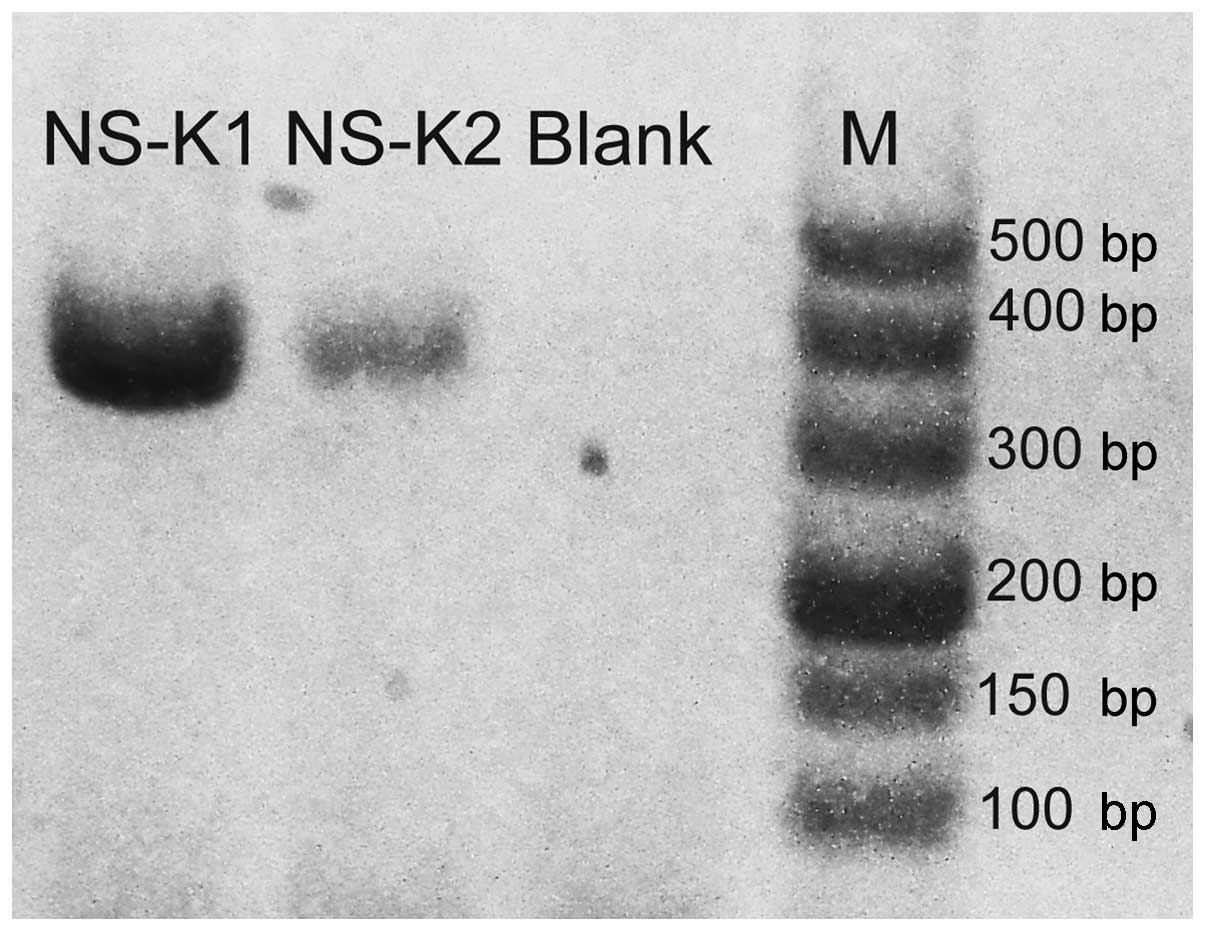16S rDNA PCR-DGGE and sequencing in the diagnosis of neonatal late-onset septicemia
- Authors:
- Published online on: July 28, 2015 https://doi.org/10.3892/mmr.2015.4131
- Pages: 6346-6352
Metrics:
Total
Views: 0 (Spandidos Publications: | PMC Statistics:
)
Total PDF Downloads: 0 (Spandidos Publications: | PMC Statistics:
)
Abstract
The 16S rDNA polymerase chain reaction (PCR)-denaturing gradient gel electrophoresis (DGGE) and sequencing method has been demonstrated to be valuable in detecting pathogens in the blood of patients suffering from fever or neutropenia. However, its use in the diagnosis of neonatal late‑onset septicemia (LOS) has not yet been reported. The aim of the present study was to investigate the efficiency of this method in detection of the type of bacterial infection in neonatal LOS. Blood specimens from 60 neonates in whom LOS was suspected were collected. Fourteen culture positive blood samples and 24 spiked ‘infected’ blood samples were analyzed by the 16S rDNA PCR‑DGGE and sequencing method or by pathogen‑specific PCR. Only in 5 of the 14 cases did the results of 16S rDNA PCR‑DGGE and sequencing match with the results of blood culturing. In the other 9 cases, the blood culture failed to detect bacteria, such as Neisseria sp. and Moraxella sp., which were detected by 16S rDNA PCR‑DGGE and sequencing. Furthermore, the 16S rDNA PCR‑DGGE and sequencing failed to detect blood culture‑proven bacteria, such as Klebsiella pneumonia. A competitive inhibitory effect in 16S rDNA PCR amplification may lead to the discrepancy between pathogen‑specific PCR and spiked ‘infected’ blood samples. When a certain species of bacteria was detected by 16S rDNA PCR, the competitive inhibitory effect presented a higher sensitivity in detecting this species in the blood samples that contained bacterial DNA only from this species compared with the blood samples that were blended with other bacterial DNAs. In conclusion, 16S rDNA PCR‑DGGE and sequencing can detect a more comprehensive spectrum of pathogens than blood culture. However, the competitive inhibitory effect, which may lead to false negative results should be taken into consideration when the 16S rDNA PCR-DGGE and sequencing method is applied to the diagnosis of neonatal LOS.













